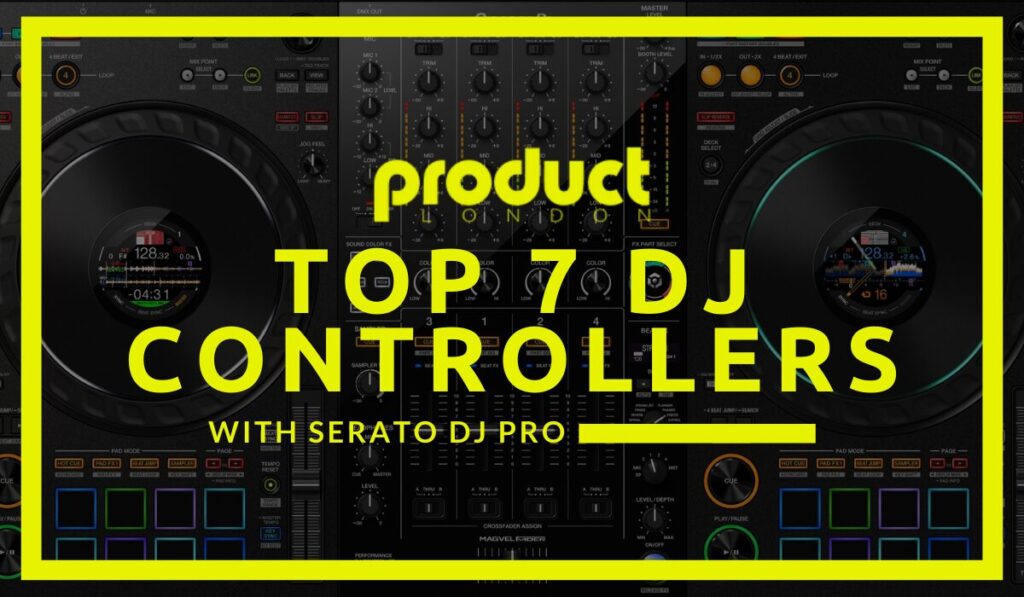To get featured on DJ podcasts and radio shows, start by producing high-quality mixes using advanced recording techniques and mastering. Employ meticulous tagging and visual branding to guarantee your mixes are searchable and visually appealing. Choose prominent hosting platforms like Mixcloud and SoundCloud to boost visibility and engage with your audience on social media and forums. Submit your mixes to podcast directories and network with podcast hosts through platforms like RadioGuestList.com. By strategically promoting your mixes and actively engaging with your community, you increase the likelihood of getting featured. Prepare to uncover effective methods to enhance your profile.
Key Takeaways
- Record high-quality DJ mixes using DAWs and ensure excellent mastering to produce professional-level audio.
- Implement consistent and detailed metadata tagging and create visually appealing cover art to enhance discoverability.
- Host your mixes on platforms like SoundCloud and Mixcloud for better visibility and audience engagement.
- Submit your podcast to directories like iTunes and maintain an up-to-date and validated RSS feed for wider reach.
- Engage actively on social media and online DJ communities to network and promote your mixes effectively.
Record High-Quality DJ Mixes
Creating high-quality DJ mixes is an important step toward getting featured on DJ podcasts. To begin with, utilizing a Digital Audio Workstation (DAW) such as Audacity or Sony Soundforge is essential for capturing your mixes in high-quality audio formats like .mp3 or .wav. These formats guarantee a clean signal when you connect your mixer output directly to the DAW, thereby enhancing the overall audio quality.
Investing in high-quality sound cards can further improve audio output clarity, making your mixes stand out even more.
During recording, maintain levels around 0 dB to prevent clipping, which can distort your sound. Consistently monitor audio levels to achieve a clear and punchy sound that stands out.
Post-production work, including compression and EQ adjustments, is critical for refining your mix. These recording techniques will improve the overall quality before exporting your mix as an MP3 at 256 kbps — a good balance between audio quality and file size.
Avoid redlining in both your mixer and DAW settings to prevent distortion and maintain audio integrity throughout the recording process. If budget permits, consider investing in professional mastering services. This can greatly enhance your mix’s audio quality, making it more appealing for submission to podcasts and radio shows.
Master Your DJ Mixes
Mastering your DJ mixes is an essential step that can greatly enhance the quality and impact of your music. To start, record your DJ mixes using a high-quality Digital Audio Workstation (DAW) like Audacity or Sony Soundforge, guaranteeing levels hover around 0db to prevent clipping and distortion. Quality sound design begins at this fundamental stage.
Additionally, consider using advanced key detection available in popular DJ software to guarantee harmonically matched mixes right from the recording stage.
Next, immerse yourself in post-production, which is vital for refining your mix. Employ advanced mixing techniques such as compression and EQ adjustments to achieve a clear and punchy sound. This meticulous process guarantees that your mixes engage listeners effectively, standing out in a competitive market.
When your mix is polished, export it as an MP3 file at 256kbps. This bitrate strikes a balance between audio quality and file size, making your tracks ideal for streaming across various platforms.
Tagging and Visual Branding
To enhance your visibility and professionalism on DJ podcasts, proper tagging with essential metadata—such as Title, Artist, Album, Year, and Genre—is non-negotiable.
Integrating high-quality content and leveraging local SEO strategies can further amplify your reach.
Complementing this with high-quality, consistent cover art and including promotional links within the tags can greatly improve your visual branding and listener engagement.
Essential Tagging Elements
Proper tagging and visual branding are fundamental aspects that can greatly enhance your DJ mixes’ professional presentation and discoverability. Effective tagging strategies involve embedding essential metadata in your mixes, which is foundational for both recognition and promotional purposes.
Here are some key tagging elements to bear in mind:
- Fundamental Metadata: Always include Title, Artist, Album, Year, and Genre in your tags. This metadata is critical for guaranteeing that your mixes appear in relevant searches and are easily identifiable by listeners.
- Promotional Comments: Use the comments section of your tags to add links to your website or social media profiles. This additional information can drive traffic to your online presence and engage your audience further.
- Consistent Tagging: Maintaining uniform tags across all platforms helps in building a cohesive identity. Consistency guarantees that your listeners can easily recognize your work among a sea of other mixes.
- Cover Art: Incorporate high-quality cover art in JPEG or PNG format at 300 x 300 pixels. This not only visually brands your mixes but also attracts more listeners, making your content stand out.
Understanding the importance of metadata and implementing these tagging strategies can greatly improve your chances of getting featured on DJ podcasts and radio shows.
Visual Branding Techniques
Building on the importance of effective tagging, the next essential element to focus on is visual branding. Visual branding plays a significant role in setting your DJ mixes apart in a crowded marketplace. By leveraging the principles of color psychology, you can evoke specific emotions and associations that align with your music style. For instance, vibrant colors like red and yellow can convey energy and excitement, while cooler tones like blue and green can evoke a sense of calm and professionalism.
Brand consistency is another key factor. Making sure that your cover art, social media graphics, and promotional materials share a cohesive visual theme helps establish a recognizable identity. This consistency can be achieved through uniform color schemes, typography, and design elements. Each mix you release should have a distinct yet consistent look, reinforcing your brand’s identity with every visual impression.
Additionally, using JPEG or PNG formats with a size of 300 x 300 pixels for cover art guarantees high-quality visuals that complement your audio content. This not only enhances the professional appearance of your mixes but also attracts more listeners.
In an industry where first impressions matter, impeccable visual branding can be the difference between being overlooked and getting featured on DJ podcasts and radio shows.
Designing Attractive Cover Art
Crafting compelling cover art for your DJ mixes is an essential step in capturing the attention of potential listeners and establishing your brand’s presence. Properly designed cover art not only makes a strong first impression but also enhances the discoverability and professionalism of your music.
To maximize the effectiveness of your cover art, follow these guidelines:
- Format and Size: Utilize JPEG or PNG formats, and verify your artwork is sized at 300 x 300 pixels. This dimension is ideal for display on most podcast platforms.
- Tagging Metadata: Incorporate essential tags such as Title, Artist, Album, Year, and Genre in the metadata. These tags enhance searchability and add a layer of professionalism to your releases.
- Visual Appeal: Design your cover art to resonate with your music style and audience. Leverage color psychology and current design trends to create visually striking and relevant imagery that stands out.
- Promotional Information: Include comments in the tagging that provide promotional information or links to your website. This not only drives traffic but also boosts audience engagement.
Regularly updating your cover art to reflect new releases or changes in branding verifies your visual identity remains fresh and relevant, maintaining a strong connection with your audience.
Choose Hosting Platforms
When deciding where to host your DJ podcast, the significance of selecting the right platform cannot be overstated. To enhance your podcast’s visibility and streaming quality, a thorough platform comparison is imperative. Platforms like Mixcloud and Soundcloud are popular choices, primarily because they support byte serving, guaranteeing seamless streaming experiences for your listeners.
These platforms also enhance discoverability on podcast directories like iTunes, which is essential for gaining a broader audience.
For those who prioritize complete control over their content, self-hosting offers significant hosting benefits. Self-hosting allows you to customize your RSS feed, making it easier to submit to various podcast services and improve your chances of being featured.
However, it’s critical to confirm your chosen host can manage your estimated storage needs, which depend on the length and frequency of your podcast episodes. This will help avoid any interruptions in service.
Additionally, opting for platforms that provide unlimited bandwidth is important to maintaining consistent streaming quality without disruptions.
Set Up RSS Distribution
Setting up RSS distribution is an essential step in guaranteeing your DJ podcast reaches a broad audience and maintains a professional standard. To achieve this, follow these detailed steps:
1. Choose the Right Hosting Service: Confirm your hosting service supports RSS feed creation and byte serving. This compatibility is important for seamless integration with major podcast directories like Apple Podcasts.
2. Include Essential Details: Your RSS feed must contain key elements such as the title, description, publish date, author, episode title, link to the MP3, duration, and a unique identifier (guid) for each episode.
This thorough information aids in RSS Optimization, making your podcast more discoverable.
3. Validate Your RSS Feed: Use tools like the W3C Validation Service and Cast Feed Validator to verify your feed meets industry standards.
Feed Validation is significant to avoid distribution issues and guarantee your podcast is accepted by various platforms.
4. Regularly Update Your Feed: Consistently updating the publish date (pubDate) for both your main podcast channel and individual episodes keeps your audience informed of new content.
This practice not only maintains listener engagement but also enhances your podcast’s visibility.
Promote Your Mixes Online
Promoting your mixes online is essential for gaining visibility and attracting podcast features.
Utilize platforms like SoundCloud and Mixcloud to upload your mixes, and actively engage with social media by sharing your work and tagging key influencers in the DJ community.
Sharing high-quality visuals alongside your mixes can greatly increase engagement.
Additionally, participate in online forums and communities related to DJing to network effectively and increase your chances of being noticed by podcast curators.
Utilize Social Media
Leveraging social media platforms such as Instagram and Facebook is essential for DJs aiming to promote their mixes online and capture the attention of podcast hosts and radio show producers. Effective social media strategies can greatly boost your audience engagement and visibility.
To maximize the impact, consider the following tactics:
- Share Snippets and Use Hashtags: Post engaging snippets of your mixes with relevant hashtags. This helps to reach a wider audience and makes it easier for podcast hosts and radio show producers to discover your content.
- Create Engaging Content: Develop content that goes beyond merely posting mixes. Live streaming sessions and behind-the-scenes videos can create a personal connection with listeners, showcasing your personality and artistic process.
- Regular Posting of Track Listings and Links: Verify you regularly post track listings and direct links to your mixes. This makes it seamless for followers to access and share your content, increasing your overall visibility on social media channels.
- Collaborate with Other DJs: Partner with other DJs or artists for joint promotions. This collaboration introduces you to their audience, thereby expanding your reach and increasing your chances of being featured on their podcasts or shows.
Engage With Communities
Engaging with online communities is a powerful strategy for DJs looking to promote their mixes and gain recognition. By actively participating in online forums such as DJ TechTools and Reddit’s r/DJs, you can share your mixes, receive valuable feedback, and connect with fellow DJs and enthusiasts. This type of community engagement not only increases your visibility but also helps you build a supportive network.
Utilizing social media platforms like Instagram, Facebook, and Twitter is essential for online networking. Promote your mixes using relevant hashtags, tagging fellow artists, and engaging with your audience through comments and direct messages. This consistent interaction can greatly boost your online presence and attract the attention of podcast hosts and radio producers.
Leveraging platforms like Mixcloud and Soundcloud is another effective method. These platforms allow you to upload your mixes and benefit from their community features and sharing capabilities, thereby increasing your exposure.
Additionally, participating in local and online DJ contests or showcases can provide further visibility and open doors to being featured on podcasts and radio shows.
Lastly, collaborating with other DJs and producers for cross-promotion can expand your reach to new audiences. This collaborative effort amplifies your chances of being noticed within the industry, fostering new opportunities for recognition.
Engage With Your Audience
Engage With Your Audience
Building a strong connection with your audience is essential for gaining recognition on DJ podcasts. A loyal and engaged audience can greatly enhance your visibility and credibility. Here are four effective strategies to foster audience loyalty:
1. Encourage Listener Feedback: Regularly seek input from your listeners by incorporating polls, Q&A sessions, and feedback requests into your podcast episodes. This not only makes your audience feel valued but also provides you with valuable insights to improve your content.
Additionally, consider hosting personal events to connect with your audience in real life, which can further strengthen these relationships.
2. Leverage Social Media: Actively engage with your audience on social media platforms. Respond to comments and share behind-the-scenes content to create a more personal connection.
This engagement helps build a loyal fanbase that is more likely to support and promote your podcast.
3. Utilize Email Newsletters: Keep your audience informed about upcoming shows, special features, and exclusive content through email newsletters.
This consistent communication fosters a stronger connection with your listeners and keeps them coming back for more.
4. Promote Ratings and Reviews: Regularly encourage your audience to subscribe, rate, and review your podcast.
Higher engagement through ratings and reviews increases your visibility and can attract more opportunities to be featured on DJ podcasts and radio shows.
Submit to Directories
Submitting your podcast to directories is an imperative step in expanding your reach and attracting a wider audience, including potential listeners and DJs. To maximize your visibility, consider using submission strategies that target popular directories like iTunes, Digital Podcast, and Podcast Directory. These platforms are widely recognized and frequented by your desired audience, making directory selection essential for your success.
For DJs, utilizing advanced library management tools can also help in organizing podcast tracks efficiently.
Before you submit, verify your podcast meets the technical requirements. Images should be within the 1400×1400 to 2048×2048 pixels range and include necessary iTunes special tags. Use the RSS format for distributing your podcast, confirming it contains key details such as Title, Description, Publish date, Author, and episode-specific information like Title, Link to MP3, and Duration.
Regularly validate your RSS file using services like W3C Validation Service and Cast Feed Validator to guarantee compliance with directory standards. Consistency is also critical; maintain a stable location for your RSS feed and keep your content fresh by updating the publish date for both your channel and episodes.
Network With Podcast Hosts
Establishing meaningful connections with podcast hosts is essential for DJs looking to expand their reach and gain valuable exposure. Relationship building and social media engagement are key strategies for achieving this.
- Social Media Engagement: Actively engage with podcast hosts on social media by commenting on their episodes, sharing their content, and participating in discussions. This not only increases your visibility but also demonstrates genuine interest in their work.
- Attend Industry Events: Make an effort to attend industry events and networking sessions where podcast hosts are present. Face-to-face interactions can create personal connections and open doors for potential collaboration opportunities.
- Utilize Guest Platforms: Platforms like RadioGuestList.com offer a streamlined way to find podcasts seeking guests. Submit tailored pitches that highlight your unique value and how you can contribute exclusive content or insights related to your DJing.
- Follow Up Professionally: After initial contact, follow up professionally with podcast hosts. Express gratitude for their work and reiterate your interest in collaborating. This keeps you top of mind and shows your professional demeanor.
Frequently Asked Questions
How Do You Get Featured on the Radio?
To get featured on the radio, develop a compelling pitch highlighting your unique story and audience value. Utilize radio promotion strategies and media outreach platforms like RadioGuestList.com, alongside networking at industry events, to increase visibility and opportunities.
How to Become a DJ on the Radio?
To become a DJ on the radio, hone your DJ skills, build radio connections, and curate an exceptional music selection. Engage your audience through social media and live performances, demonstrating your ability to entertain and connect with listeners.
How to Start a DJ Podcast?
To start a DJ podcast, invest in quality podcast equipment, choose a reliable hosting platform like SoundCloud, and guarantee consistent audience engagement through regular uploads and active promotion on social media to build and sustain your listener base.
How to Make a DJ Radio Show?
To create a successful DJ radio show, focus on DJ show formats, essential equipment, guest mixing opportunities, and meticulous playlist curation. Employ effective promotional strategies and foster audience engagement to build a loyal listenership and enhance your show’s profile.
Conclusion
Securing a feature on DJ podcasts and radio shows necessitates meticulous preparation and strategic promotion. High-quality and well-mastered DJ mixes serve as the foundation, while effective tagging, visual branding, and choosing appropriate hosting platforms enhance accessibility. RSS distribution and online promotion amplify reach. Engaging with the audience and submitting to directories further solidify presence. Networking with podcast hosts provides essential industry connections. Mastery of these elements greatly increases the likelihood of gaining recognition in the competitive DJ landscape.




